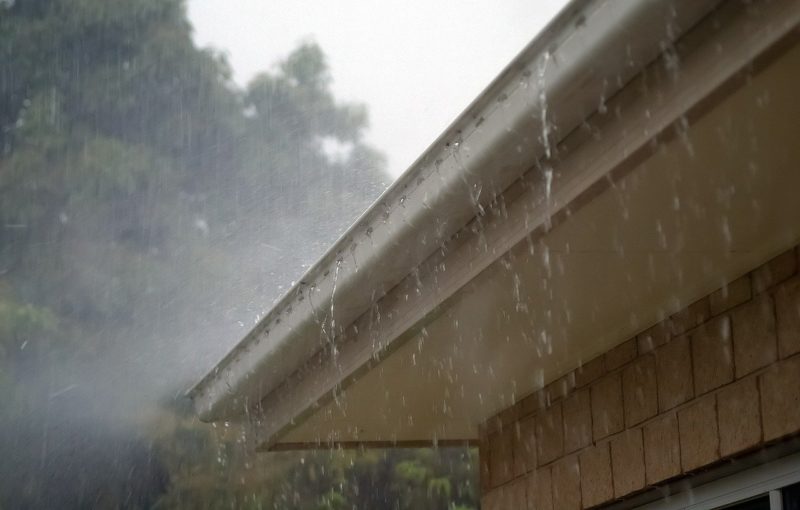5 DIY Home Maintenance Tips for Spring
Spring is the time when maintaining your home is actually fun. It’s the easiest time to make your home look its best by adding a new coat of paint or planting a few fruit trees. Plus, the longer days let you tackle those bigger weekend projects. It feels good to get outside to do some work after being cooped up all winter. Try these five do-it-yourself home maintenance projects that’ll save you money and get you some much needed fresh air.
Prep Your Cooling System
Spring is the time to prep for summer. If there’s a problem with your HVAC system or window units, you may need a few months for fixes or replacements. Start with some basic air conditioner maintenance like changing your system’s filters. Your unit uses less electricity, lasts longer, and blows cleaner air when it has clean filters.
And clean your AC condenser coils. For window AC units, remove and blow out dust and debris from the coils with coil cleaner and a water hose. For larger HVAC condensers, sweep away any sticks, leaves, and debris that accumulated over winter. Use a hose to spray between the thin radiator fins to remove any obstructions to airflow. Finally, lubricate any moving parts with WD-40 or similar lubricant.
Clean Out the Gutters
Those spring rains will quickly back up into gutters damned with leaves and dirt. Accumulated rainwater causes roof leaks and wood rot in eaves. Blow any winter debris from your gutters with a power sprayer, which you can rent or buy at any big-box hardware stores. Special attachments and extenders come with power washers that make a ladder unnecessary. That makes cleaning safer too. And while you’re blowing water through your roof’s drainage system, check for leaks where each gutter section joins. Then stop the drips by applying an exterior caulking to the seams. Finally, don’t forget to blow out your downspouts to flush out any loosened debris.
Wash Your Home’s Exterior
Use a power washer or a garden hose to blast away dirt, grime, and cobwebs from your home’s exterior. Besides making your home shine again, washing it reveals some problem areas like missing caulking around windows, cracks in your foundation, or peeling paint. Note any needed fixes as you go and return later to paint or patch things up. And while you’re washing your home’s exterior, take a good scrubbing to those dirty windows. You can wash windows like a pro with a bucket of soapy water, a scrubber, squeegee, and towels. Buy or rent a squeegee extension pole to reach higher windows or those on a second story.
Inspect the Roof
Winter’s cold temps, snow, and ice play havoc on your roof. As your shingles expand and contract with temperature changes, gaps form between roof joints and around flashing gaskets. If spring rains run into those gaps, you’ll soon have wet attic insulation and soggy drywall. Inspect your roof for missing, loose, or curled shingles. You may need a professional roofer if you have ceramic or wooden shingles. But common asphalt-shingle repair is definitely a DIY project.
Also, note any damaged flashing around plumbing vent pipes, attic vents, chimneys, and skylights. If there are gaps or breaks, seal them up with caulking, pitch, or an appropriate roof sealant. And there’s no need to take to the roof for your inspection. Leave the ladder in the garage and use a pair of high-powered binoculars to scan your roof from the safety of the ground.
Prune Your Trees
Properly pruned trees improve the aesthetics of your trees and property. But that’s just the beginning of the benefits. Cutting back dead limbs also protects your property from damage from falling branches. And if you have fruit trees, pruning is mandatory for growing strong healthy trunks and increasing fruit production. Late winter or early spring is the perfect time to prune trees. They’re still dormant and haven’t begun putting on buds and leaves.
To prune a tree the right way, you’ll need a hand saw or pruning shears. In general, only remove branches that are less than five centimeters in diameter. But if larger branches are damaged or rubbing across another, they’re okay to cut too. But don’t trim a branch too short or leave it too long. Cutting too short can damage your tree. Always leave the branch collar intact, but don’t leave a stub extending from the collar. Too much branch, and it will grow back.
Author Bio
Morgen is a global adventurer and avid DIY-er. She writes about topics ranging from tech to home improvement to travel. You can find more of her work at https://contently.com/.














